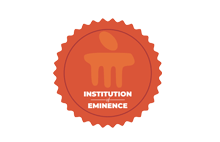Development and validation of Competing Sentence Test in Kannada
Document Type
Article
Publication Title
CODAS
Abstract
Purpose: The main objective was to develop and validate a MATLAB-based Competing Sentence Test (CST-K) and obtain preliminary normative data for this test within a small cohort of children aged 8 to 12. Methods: This study comprised two phases. Phase 1 involved developing and validating the Competing Sentence Test in Kannada (CST-K). Sentences were selected from Kannada academic textbooks of III and IV standards, recorded by a male native Kannada speaker, and evaluated by three experienced audiologists. Phase 2, which includes normative pilot estimation, was conducted on 60 right-handed children aged 8–12 without hearing difficulties. The CST-K was administered in a quiet room in the school, where the noise level ranged from 40.3 to 43.2 dBA using a laptop and soundcard, presenting thirty pairs of simple sentences with a signal-to-competition ratio of -15 dB. Test-retest reliability was assessed after three weeks. Participants were evenly distributed among four age groups: 8–8.11 years, 9–9.11 years, 10–10.11 years, and 11–11.11 years. Results: The results indicated a significant difference between the scores obtained for the right and left ears. There was also a statistically significant difference across the age groups. The test-retest reliability test showed excellent reliability for the right ear and good reliability for the left ear scores. Conclusion: A MATLAB-based Competing Sentence Test in Kannada Language was developed and validated in a recent study. The study found that scores were higher for the right ear and there was a significant age-related difference. This test can be used to evaluate binaural separation skills in Kannada-speaking children and can be included in the test battery. The study also provides normative data for the competing sentence test, which is reliable, making it a unique tool for clinicians to assess various clinical populations.
DOI
10.1590/2317-1782/20242023355EN
Publication Date
1-1-2024
Recommended Citation
Rhythm, Bhavana; Palaniswamy, Hari Prakash; and Muthu, Arivudai Nambi Pitchai, "Development and validation of Competing Sentence Test in Kannada" (2024). Open Access archive. 10607.
https://impressions.manipal.edu/open-access-archive/10607


